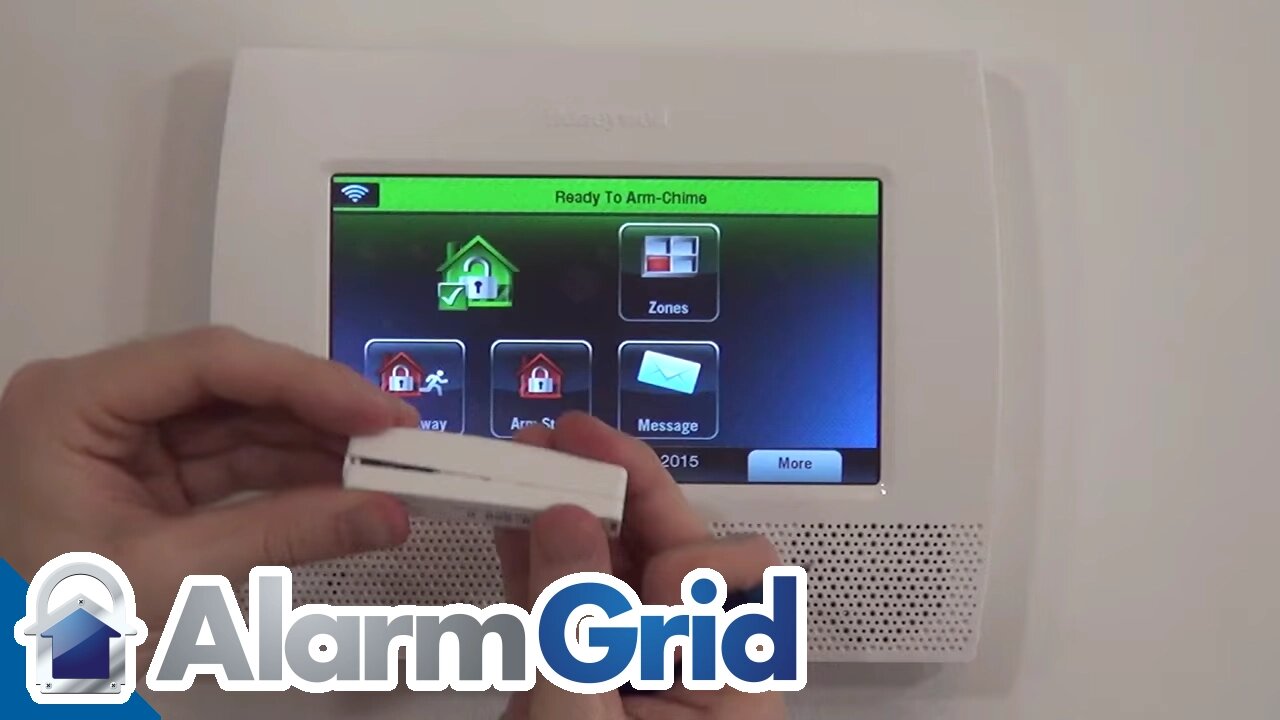Premium Only Content

Honeywell 5820L: Inserting AAA Battery
The video shows how AAA lithium batteries are used to keep the door and window sensors of your system powered up and working correctly.
Get Monitored! http://alrm.gd/get-monitored
The door and window sensors are an important aspect of your home security system. After all, the control panel and monitoring services need working sensors in order to detect breakage, smoke and other environmental changes.
While replacing a battery in an alarm sensor isn’t terribly complicated, there are some details you’ll want to be aware of. This video shows you everything you need to know to keep your sensors fully powered and working properly.
Most alarm systems are powered by standard lithium batteries. Sometimes the best solutions are the simplest. Standard lithium batteries have no external power supply which can be tampered with. Plus, replacement batteries are affordable and easy to find.
The sensors for the Honeywell 5820L system use AAA lithium batteries. You’ll want to ensure each sensor always has working batteries.
As the video shows, the sensors aren’t very big. They’re rectangular in shape and about the length of an index finger. The plastic outer shell is durable but lightweight.
The video shows you how to open the sensor to reach the battery. Along one of the short ends you’ll find a little tab. Using a screwdriver, press down on the tab to open the sensor. When opened the sensor basically splits into two long, thin halves.
The bottom plate has the unit’s serial number on the back. This will be one letter followed by seven digits. The serial number is prominently displayed because it’s often useful info to have when setting up various features (although auto-enrollment through the alarm services is also an option).
The video shows an in-depth view of the top part of the sensor. Inside you’ll see the serial number, model number circuitry and a tamper switch.
When the cover is on, a small piece of plastic acts as a tamper switch. If the sensor is pried open, the switch is released and the tamper alarm activated. The control panel will then display a Zone Tamper Alarm.
The video will help you make sure you put the battery in correctly. This can be a bit trickier than you might think. Sensors are easy to get turned around, so you want to make sure you match up the positive and negative terminals correctly.
After inserting the battery, you’re ready to close the sensor back up. There’s a hinge which connects the two halves. The video presents a clear visual of sensor reassembly.
Once the sensor is assembled and powered up, you’ll use the included magnet to attach the sensor to doors, windows and other potential entry points. When placing sensors, you want to cover any potential threshold crossing. But you also want to keep convenience in mind, too. You’ll have to replace batteries from time to time, so make sure the sensors are relatively easy for you to reach.
Fresh batteries are an important part of your alarm system. Fortunately, replacing the batteries and keeping your sensors in proper working order is easy for any do-it-yourselfer.
-
 3:39
3:39
Alarm Grid Home Security DIY Videos
1 year agoQolsys IQ Panel 4: Using Dual Path Monitoring
21 -
 4:58:51
4:58:51
Steven Crowder
12 hours agoLIVE: No Kings Day - Following The Money w/ Guest: Data Republican | Louder with Crowder
778K397 -
 1:11:45
1:11:45
Man in America
10 hours ago🚨 America Descends Into CHAOS—Are You Prepared?
58.7K50 -
 2:23:54
2:23:54
Badlands Media
23 hours agoDevolution Power Hour Ep. 363: Lawfare, Psyops, and the Great Narrative Reversal
76.6K19 -
 2:32:48
2:32:48
Tundra Tactical
5 hours ago $6.93 earnedSilencers, Senators, and Survival: Roasting Lies and a Security Breakdown of The MN Shooting
42.8K5 -
 LIVE
LIVE
Spartan
8 hours agoPro Halo Player | !politics Halo Infinite Ranked Arena into SWTOR and/or Gears Beta
248 watching -
 40:25
40:25
The Connect: With Johnny Mitchell
1 day ago $7.43 earnedBlackwater CEO Erik Prince Gets HONEST About The Israeli Invasion Of Lebanon
36.7K38 -

BlackDiamondGunsandGear
5 hours agoAfter Hours Armory / Is the World ENDING?
59.5K3 -
![[NEW] FIVE NIGHTS AT FREDDY'S - SECRET OF THE MIMIC - Horror Game](https://1a-1791.com/video/fww1/cb/s8/1/F/2/r/T/F2rTy.0kob-small-NEW-FIVE-NIGHTS-AT-FREDDYS-.jpg) 4:21:28
4:21:28
cosmicvandenim
7 hours ago[NEW] FIVE NIGHTS AT FREDDY'S - SECRET OF THE MIMIC - Horror Game
74K1 -
 2:14:37
2:14:37
DLDAfterDark
6 hours ago $1.17 earnedThe After Hours Armory - WWIII - The World Is Melting - Feat. Gideon Optics
36.2K3